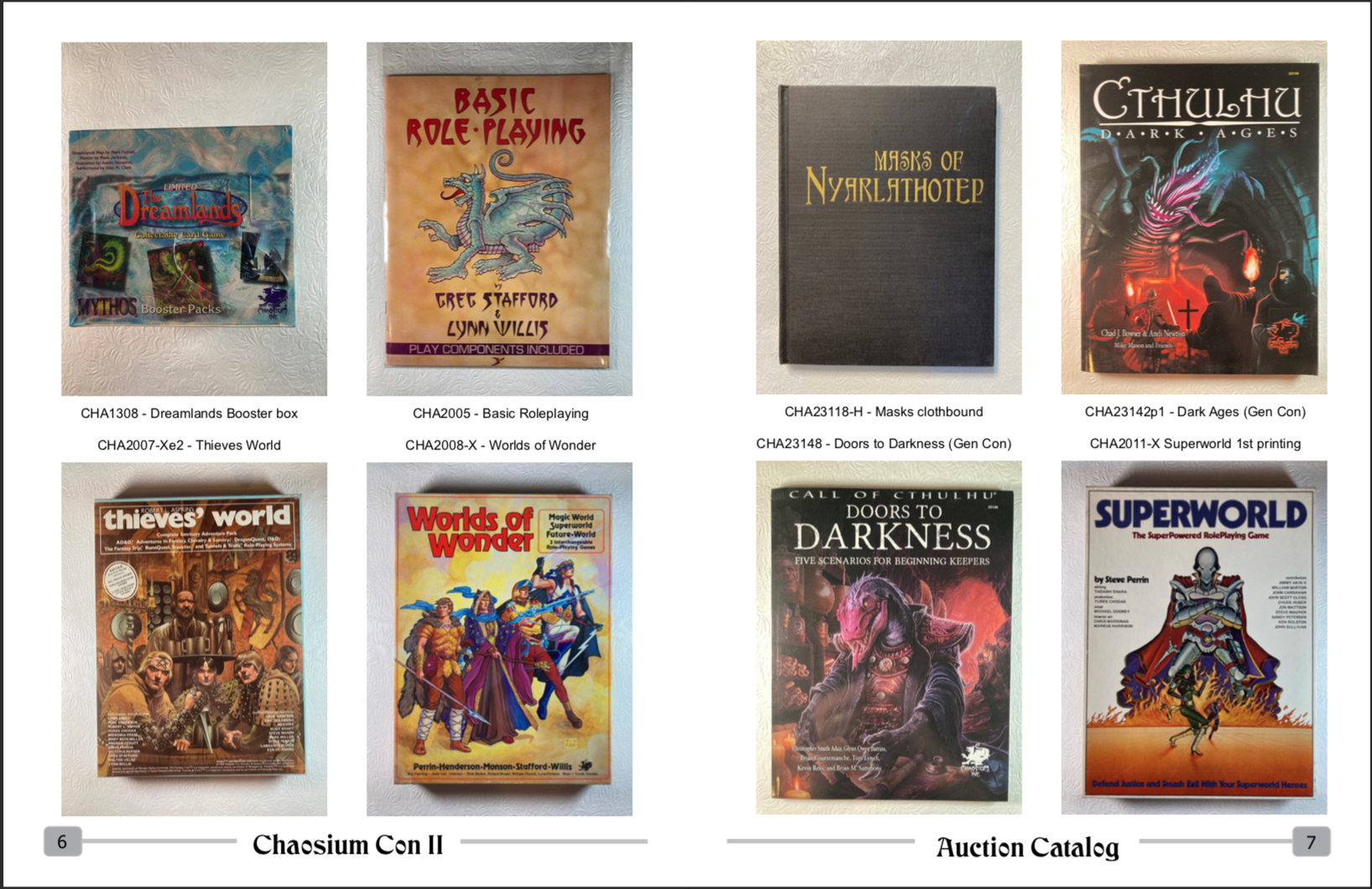Welcome to a new issue of the Journal of Runic Studies, the premier Malkioni publication for studies into the nature of Glorantha. If you haven’t subscribed yet, please consult with the spirit bound to the appropriate electronic page.
God Learner Sorcery
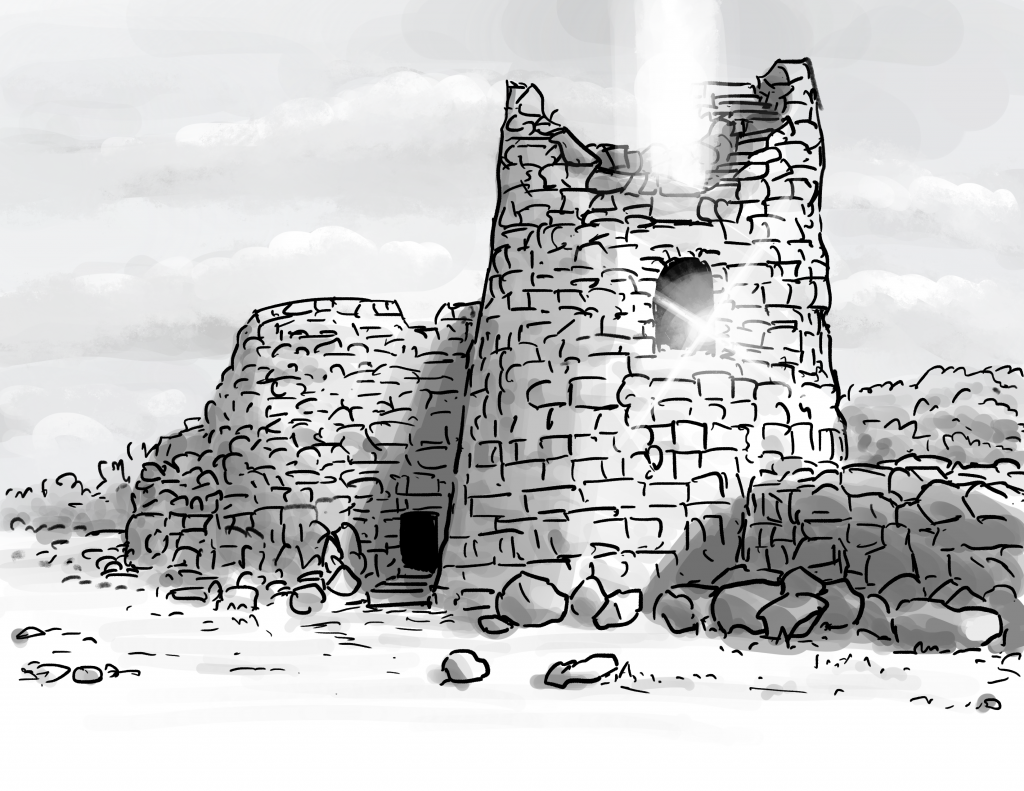
Here is what us God Learners were up to this week.
Episode 20: Imther, Edge of the Empire
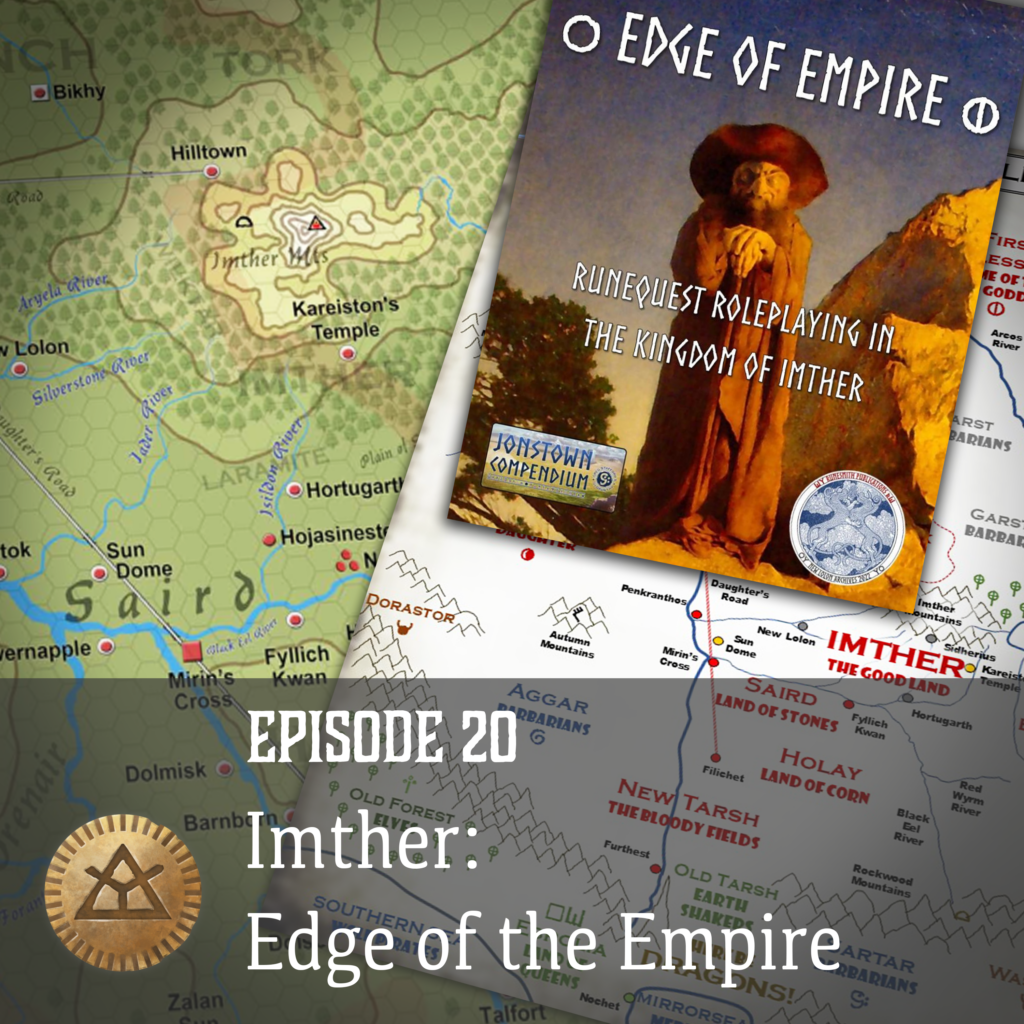
Joerg and I welcome Harald “Jajagappa” Smith to the podcast, as we talk about his recent Jonstown Compendium book “Edge of Empire”, focused on the Lunar province of Imther. We also discuss cheeses, in-world documents, dwarf-speak, maps, and more!
Chaosium News

Here are this week’s Chaosium news!
Event Registration is Open for ChaosiumCon 2023

As previously promised, the event registration for ChaosiumCon 2023 is open! Head over to Tabletop Events for the full schedule.
I (Ludovic) am going again this year. I will be running my Telmori one-shot a second time, but I will also be part of two panels! I’ll be on the “Podcasting 101” panel with many much better and more successful podcasters and streamers (I mean, Seth f’ing Skorkowsky is on there!), and I’ll also be on the “How to Stop Worrying and make Glorantha Yours” panel (with Jeff f’ing Richard!)
As you can imagine, my imposter syndrome is going right through the roof right now… so if you’re at ChaosiumCon this year, come by and say hello!
ChaosiumCon 2023 Auction Catalog
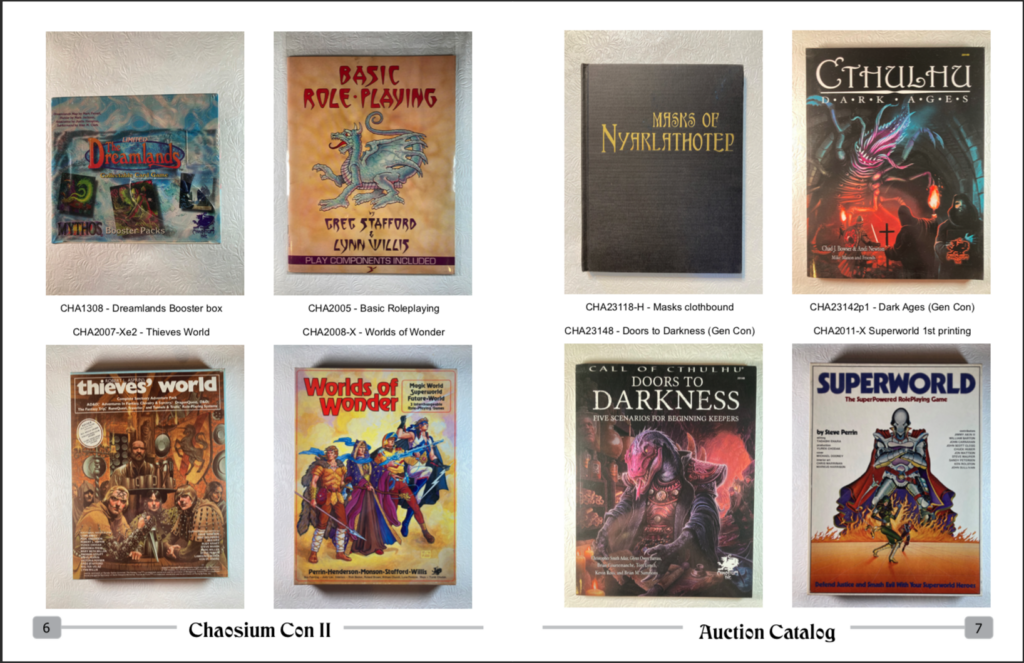
Speaking of ChaosiumCon, this year the list of products being auctioned at the convention has been prepared and published ahead of time! This is really great for any collector on the lookout for a specific item.
See anything you like? See here, or download the catalog PDF directly here.
Lucia Versprille Join the RuneQuest Team
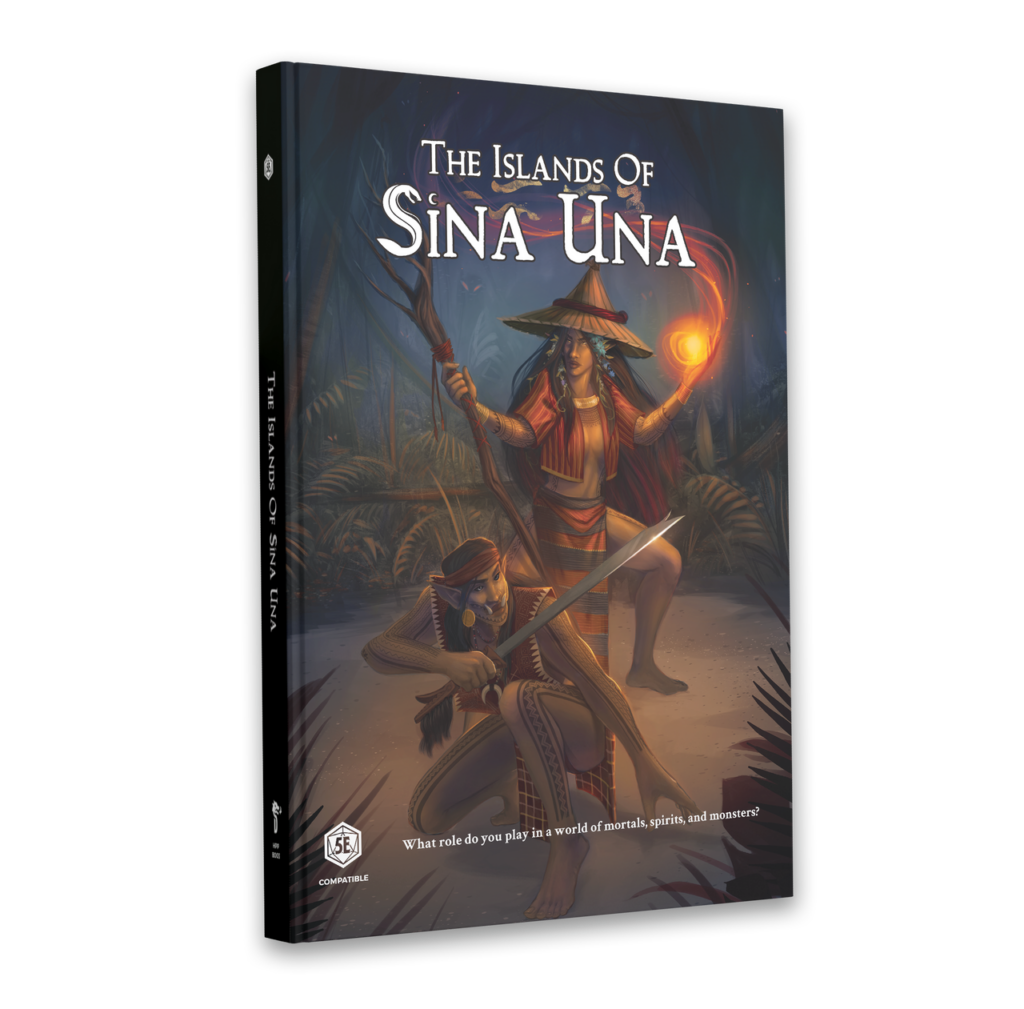
Lucia Verpsrille, the lead and art director behind the very pretty looking Islands of Sina Una, is joining the RuneQuest team as an art director “for an unannounced RuneQuest project“. Given the themes of Sina Una, with its focus on culture, cosmology, spirits, and flavourful mechanics, I think this is a great match for Glorantha!
Lucia is also playing on one of Chaosium’s official Call of Cthulhu actual plays.
Japanese Edition of RuneQuest Announced
From Chaosium’s blog:
Today our friends at FrogGames announced a forthcoming new licensed Japanese edition of RuneQuest: Roleplaying in Glorantha, the mythic fantasy RPG created by Greg Stafford and first published by Chaosium in 1978.
Well, that explains why my social media filters suddenly filled up with posts in Japanese…
Hobby Japan translated and sold a portion of RuneQuest 3rd Edition from 1987 to 1994. At the time, the game was even more popular in the Japanese market than Dungeons & Dragons and it still has many fans in Japan and abroad. FrogGames’s announcement has been well-received by TTRPG fans in Japan.
I don’t imagine that the new edition will have the crazy covers of the aforementioned 1990s edition (more here and here) but hey, we can hope! The Japanese edition is scheduled for “fall of 2023”.
Jeff’s Notes

Jeff Richard, the current mastermind on everything Gloranthan at Chaosium, is often posting notes and thoughts on the RuneQuest Facebook group. Here’s our curated list from the past week. A partial archive of these sources is compiled on the Well of Daliath.
City Gods and Patron Deities
Here’s a note explaining the difference between a city’s god and a city’s patron deity.
A city’s patron deity is the protector of the city, and is often a powerful god of the local pantheon. For example, in most Sartarite cities, Orlanth Rex is the patron of the city, and his cult is often tied intimately with that of the city founder/city god. In Dara Happa, Yelm is the patron deity of Raibanth, but not the city god. Orlanth, Yelm, the Red Goddess, Ernalda, and Godunya and the Exarchs are among the most important patron deities in Genertela.
For those of you with only the basic RuneQuest books:
- Dara Happa is up north from Dragon Pass, in the region known as Peloria. Traditionally the heart of the Sun cults, it’s now part of the Lunar Empire. Raibanth is a big city there.
- Godunya is the Dragon Emperor of Kralorela, the sort of fantasy-Asia land that covers the eastern coast of Genertela. The Exarchs are the the Kralorelan governors that govern the state under Godunya.
You can see Raibanth not too far south of the giant crater left by behind when the Red Moon went up in the sky long ago:
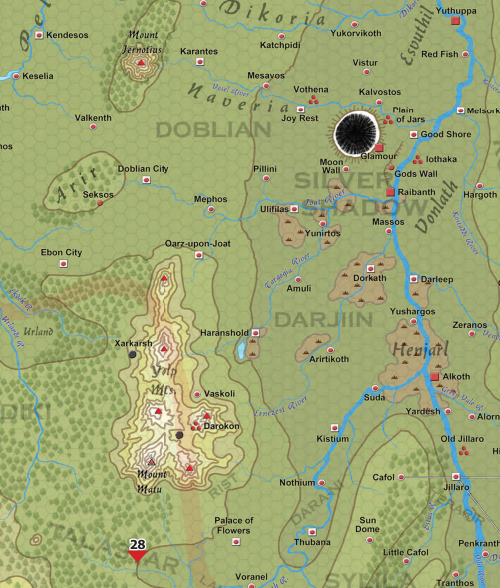
The fun thing is that I just learned that Raibanth is split in three. The rivers running through the city mark the limits of each part. There used to be big bridges connecting the three quarters, but due to some rebellion on the part of the Dara Happans in the 1200s, the Red Emperor destroyed all bridges but one, and gave each quarter to a different jurisdiction (in this case Silver Shadow, Darjiin, and Kostaddi). So yes, bureaucracy is yet another weapon at the disposal of the Lunar Empire.
Anyway:
The city god is the god of the individual city, worshiped by local officials and citizens. It provides social harmony, guards against civil strife, and often has other associated gods. Sometimes the city god is little more than a local subcult of the patron (such as Sartar with Orlanth Rex), sometimes the city god serves also as the patron deity (such as Pavis). City Harmony is the special Rune spell most commonly associated with the city god. The city god’s magic can only be cast within the precincts of the city.
Jeff gives some examples of well-known city gods and patron deities (go check it out!) The way I understand it, the city god is unique to that city (i.e. you won’t find anybody worshipping that god elsewhere), whereas the patron god is a much more widespread cult but is of some particular significance to that city (and might therefore have a notable temple or landmark there).
The City Harmony spell is in the Red Book of Magic page 28.
City gods and village gods generally don’t have many initiates: only the city ring, village chieftain, and so on are initiates. However, the majority of people living there are lay members. In terms of RuneQuest mechanics, these gods and spirits are urban wyters.
Lay Membership
This note on lay members simply outlines how most people in Glorantha are initiates of one cult, but lay member of a few others as well. This shouldn’t be news to most of you, but if it is, remember that offering lay membership to your players makes things a bit more interesting for their characters. The gamemaster gets a few more avenues to deliver plot hooks, and the players get access to discounts on some skill training and spirit magic.
Troll Occupation of the Big Rubble
Let’s head out to the Big Rubble in Prax:
One important way by which humans survived the Troll Occupation of the Big Rubble was through the Pavis priests. Strategic use of City Harmony, small fire, earth, and water elementals, and the Support spell, especially aided by the presence of Lord Pavis, was enough to let humans survive in their strongholds.
Okay, let’s read up on the Troll Occupation of the Big Rubble… it’s tricky because the history of Pavis and the Big Rubble is one of the most convoluted sagas in Glorantha. As I understand it, it goes a bit like this:
- God Learners see that giants put their babies in cradles and send them down the Zola Fel in a cradle full of treasures… because giants’ parenting skills suck. So around 720 the God Learners build a city along the river called Robcradle to, well, rob the cradles.
- To accomplish this the God Learners had formed an alliance with the Pure Horse People of Pent, who came raiding around Prax every now and then, and which the nomad tribes of Prax (already there at the time) did very much not like.
- Pissed off by this, in 800 the giants come down from the mountains and, with the Praxians, fuck Robcradle up. The Praxians go on a plundering tour of other local cities and towns like Adari. The giants put down big slabs of stone to wall off Robcradle.
- A weird guy named Pavis, who was in Adari when the Praxians raided it, becomes a big magical nerd. He finds a giant statue up north in the mountains, and animates it like a giant Pacific Rim mecha robot. Along with the Pure Horse people, he marches the statue to the old site of Robcradle, where various nomads and giants reside. The big statue beats the crap out of the giants. Praxian god Waha comes out and also gets beaten. Pavis is on a roll. But then, Pavis gets soft: he starts making some compromises with the Praxians and heals Waha in exchange for peace.
- The big mecha statue is all spent and falls inside Robcradle. The dwarfs come out and make deals with Pavis if they can mine the sweet stuff from the statue.
- In 850 the city is complete and Pavis “retires permanently”, becoming the city god and patron from his fancy villa/temple.
- After this there are some more problems. In the late 800s the giants come back for round two. The city fights back, especially with the help of the dwarfs, who fix the ugly slabs of stone around the site and turn them into nice big walls with cool looking gates.
- In the mid 900s, a guy called Jaldon Toothmaker unites some of the animal nomad tribes, who had been gradually pushed towards the Wastelands by the increased presence of horse riding tribes around Pavis. Jaldon had some crazy statue-magic of his own and we… (checks notes) chewed his way through the city’s walls. Well maybe he didn’t do it, and it was one of his weird giant statues. Who knows. Anyway, Jaldon sacks the place.
- From the mid 900s to the mid 1200s, the city goes to shit. It keeps getting raided by Praxian nomads, despite the best attempts of the local people to find some effective leader to protect them. You might actually have heard about the last of those before we get to the Troll Occupation… that last human leader was Balastor. His barracks are famous.
- Okay, we’re almost done, I promise! So the human residents of the city-formerly-known-as-Pavis are completely fed up and decide to call the trolls for help. So the trolls roll in around the time the Praxian nomads are once again raiding the city. The trolls kick some their ass, but not before Balastor, the “last popular leader of the humans”, is killed. So the trolls sort of look around and go “…errrr, well, I guess we’ll take it?“
Lo and behold, the trolls seal the nice walls left behind by the dwarfs and the humans, and they occupy the place from 1237 to 1539, when the city is opened again. This isn’t by choice on the part of the trolls, by the way. It’s because of the strange event called the Dragonewts’ Dream, during which weird ghost Dragonewts punch holes through the city’s walls because they want to go through. Let’s not go into that now…
For three centuries, the humans of the Big Rubble survived in their little strongholds, relying on the Pavis cult, troll internecine conflict, and the dangers of the Big Rubble to prevent their extermination. No doubt the Kaggroka clan found it easier to make the humans pay a tribute in food and service than to trying to eliminate them. In the world within the great walls, they were the rulers, but their rule was constantly unsteady and often challenged.

Okay so if you look at the (modern) map of the Big Rubble above, look for “Temple Hill” north of the Troll Stronglands. This hill was the centre of the troll presence in the Big Rubble during the Troll Occupation. The “Kaggroka” that Jeff referenced above is the name of the leading troll clan at the time. In fact, Temple Hill had a “Kraggroka Fort” on top of it for a while. You can find a bit of information on them, and the other troll clans, in Big Rubble: The Deadly City.
Another key to human survival was the approximately 200 dwarfs in the Big Rubble. The Flintnail cult is closely associated with Pavis and the dwarfs aided their human allies.
As mentioned, the dwarfs helped make the walls, and probably stayed there in the Big Rubble during the Troll Occupation to continue their mining operation of Pavis’ old big cool statue…
Anyway, there’s a lot going on in Pavis and the Big Rubble, much of which I don’t know about yet. I’m looking forward to learning more!
Mythology is Not Set in Stone
It must be emphasized that mythology is not set in stone. Each myth, endlessly retold and re-experienced, has countless variations. The name of a god will change from one story to the next, a twist in a tale will be explained in different ways by neighboring groups.
There’s quite a bit to unpack in this note but the following message is something Jeff often repeats, so I guess it’s important:
We are trained to look at myths as texts, to be argued about, dissected, interpreted and reinterpreted. Although that can be useful, it is the weakest way of experiencing them. Take these stories and experience them through play! Fill your lungs with Orlanth’s breath, call forth a challenge against the world, and strive for adventure! And that experience is going to be filled with inner Truth the written text lacks.
Expats in Coastal Cities
Remember to put communities of expatriates from various origins in your coastal cities, like Nochet:
The seas have been opened for some 40 years, and by now many thousands of people have travel between the continents. Probably some 10-20,000 people from the Holy Country have emigrated overseas, and Kethaelan “colonies” are common sights in many coastal cities around the Homeward Ocean.
It works the other way as well, as there is are Fonritian, Kralorelan, and Teshnite “colonies” in cities such as Nochet, Handra, and Noloswal.
Something to keep in mind, as my players are headed for the Holy Country right now…
The Black Sun
Something I have absolutely zero knowledge about… and no time left to research it, so you’re on your own here:
[The] Black Sun is an important mystical concept – the Shadow of Yelm. The trolls found him on the Fields of Doubt, and those led by Dozaki decided to follow the Black Sun, who became a powerful ally of the trolls. At the Glory of the Black Sun, the Black Sun’s forces crushed Chaos and dismembered Tien. At Winter Win, the Black Sun aided Himile and the Blue Moon trolls to destroy Chaos.
[…]
The Black Sun last appeared during the Sunstop, when he eclipsed the Sun and then disappeared.
Again, I have no idea what this all is about… and there’s a lot to unpack. Something for another time.
Community Roundup
The community roundup is our highlight of interesting things being mentioned in the Glorantha-related Facebook groups, sub-Reddits, and other similar online places.
The Grognard Files: RuneQuest Remaster
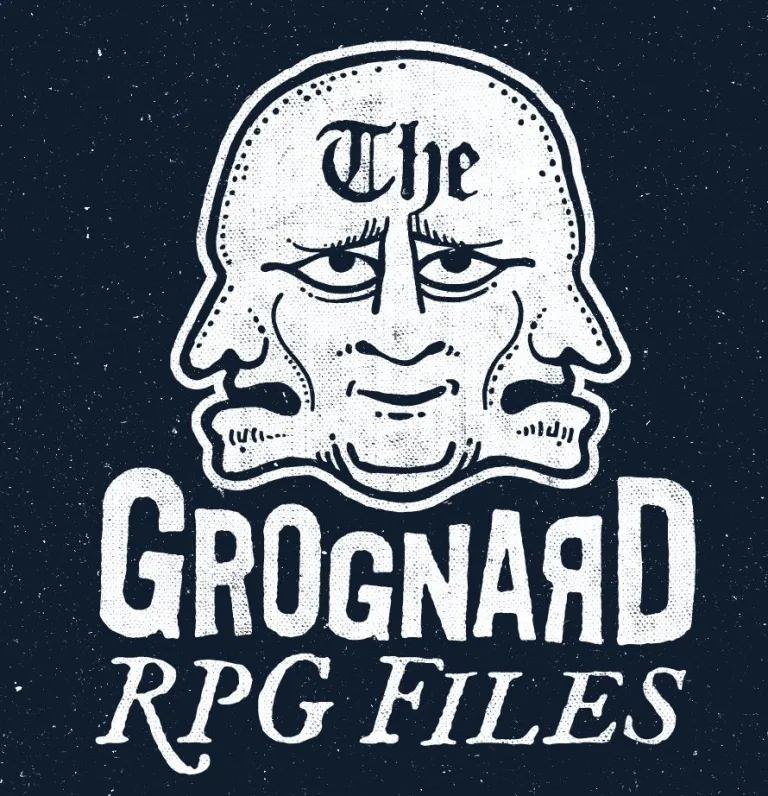
Dirk The Dice, host of the excellent Grognard Files podcast, has started remastering his old episodes. The first two episodes of his podcast were focused on RuneQuest, looking back at the 2nd edition that Dirk played so much back in the 1980s.
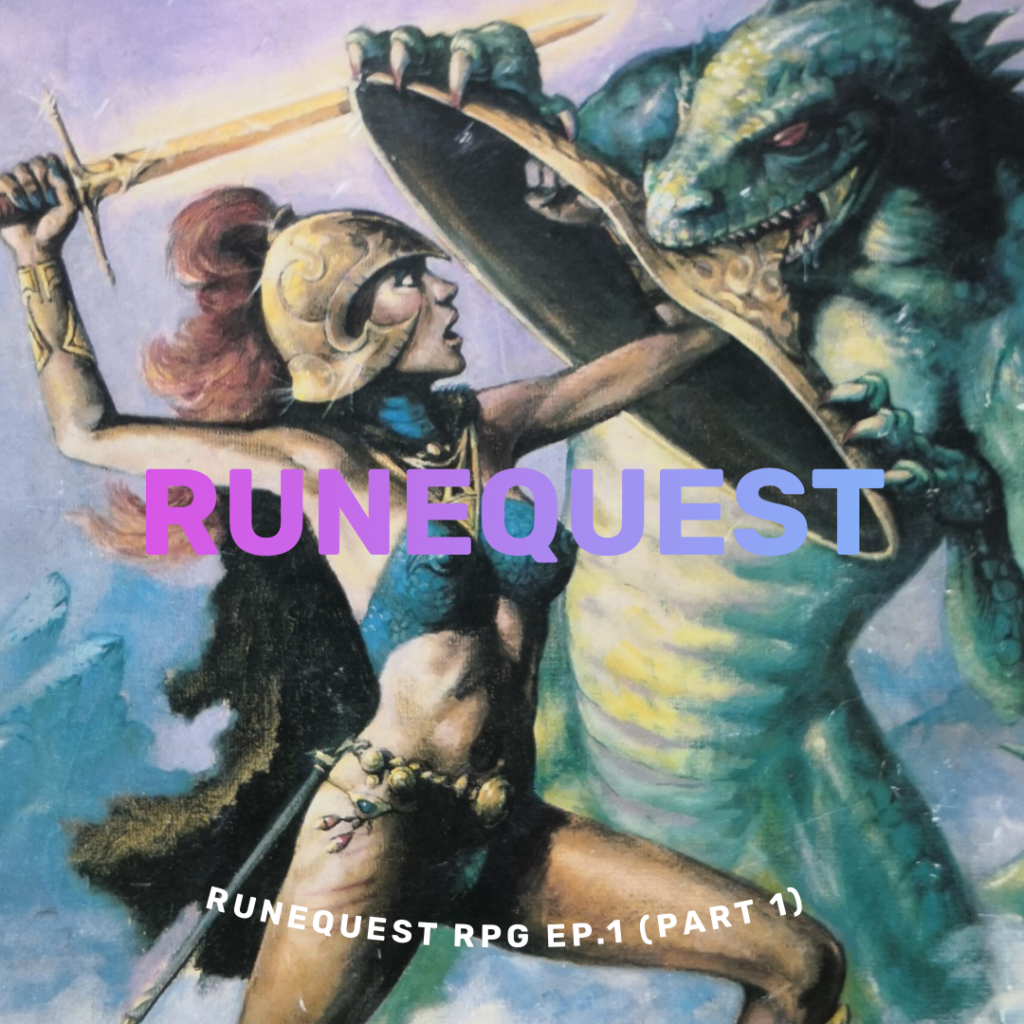
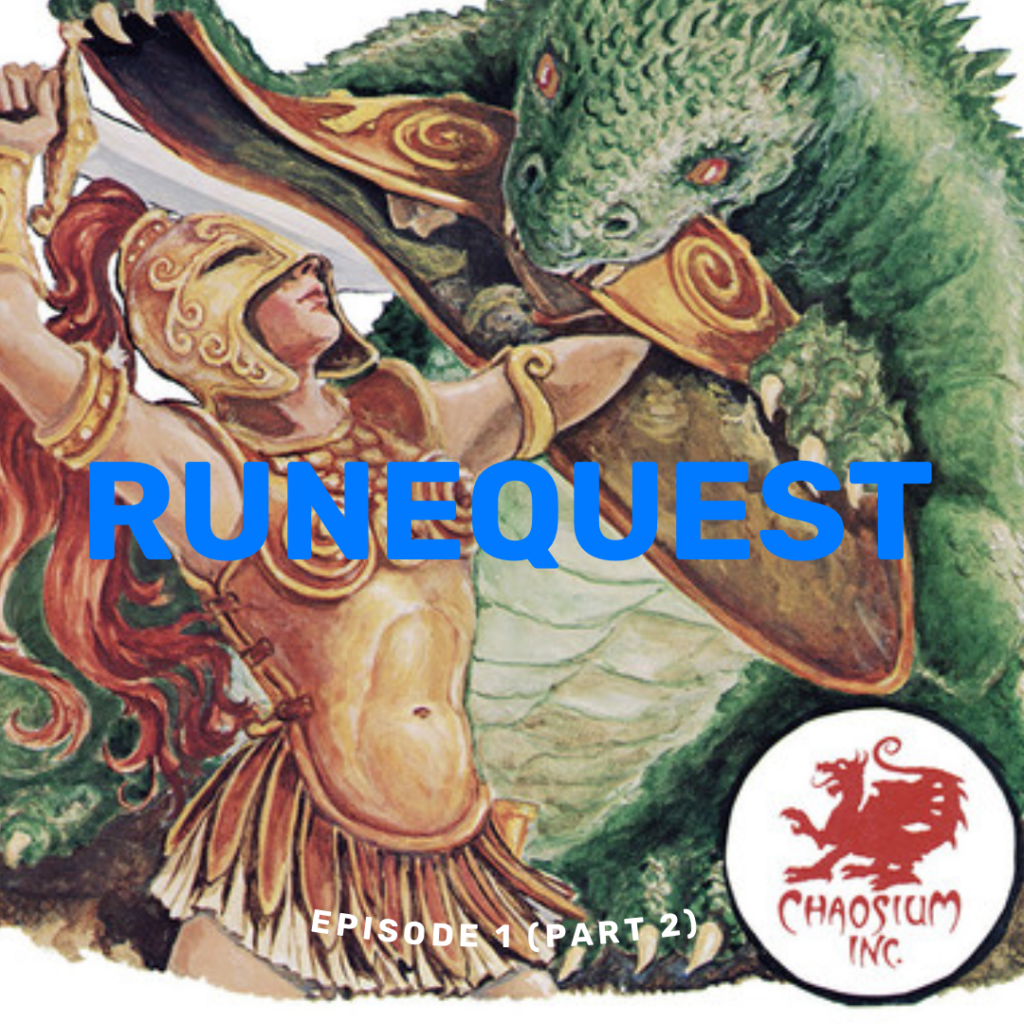
If you have never listened to the Grognard Files, it’s a good opportunity to get started! Both RuneQuest episodes have been remastered (part 1 and part 2). If you have already listened to them, you can check out Dirk’s “Remaster Reflection” added at the end of the episode, as he reflects back on making these episodes.
Of course, you can listen to them in your favourite podcast app by searching for “Grognard Files”.
Matthew Constantine on the RuneQuest Starter Set

A couple week ago Matthew unboxed the RuneQuest starter set on his YouTube channel. Now it’s time for a review on his blog!
There are a few bits I like in this review:
The setting was huge and rich and full of concepts I didn’t really understand. I discovered the YouTube channel Bud’s RPG Review, and he covered a bunch of RuneQuest, which started teaching me some of the names and places, but I was still missing something, some essential element that would open Glorantha to me. Even after reading the Quickstart Rules and The Glorantha Sourcebook, I was not getting it. I knew more, but still lacked understanding. It was only when I watched a little bit of an actual play of the video game Six Ages: Ride Like the Wind that my third eye opened and I “got” it. That prompted me to pull this box set off the shelf and finally crack it open.
That’s an interesting and unusual way to “get” Glorantha that I had not heard before. Maybe I’ll check out those Six Ages actual plays!
Also:
Where I was really stuck with roleplaying in Glorantha was with what an actual session would look like. […] in RuneQuest: Roleplaying in Glorantha, what do you actually do? I’ve started to realize that it’s more like my favorite Fantasy RPG, Ars Magica in certain ways. It’s about building community and legacy. It’s about weaving your stories together with and into something bigger.
It’s interesting to me because the “what do you actually do in this game?” was one of the recurring questions in Baz Stevens’ excellent short podcast series “RuneQuest: Year Zero“. Good that Matthew found the answer, as, if I remember correctly, Baz was left dissatisfied that the Starter Set didn’t really give a compelling answer.
Anyway, go read the whole review!
Some Cool Looking Warriors

Over on Twitter, Clark & Company made this cool looking illustration to celebrate the announcement of a Japanese version of RuneQuest: Roleplaying in Glorantha. Simple, but effective.
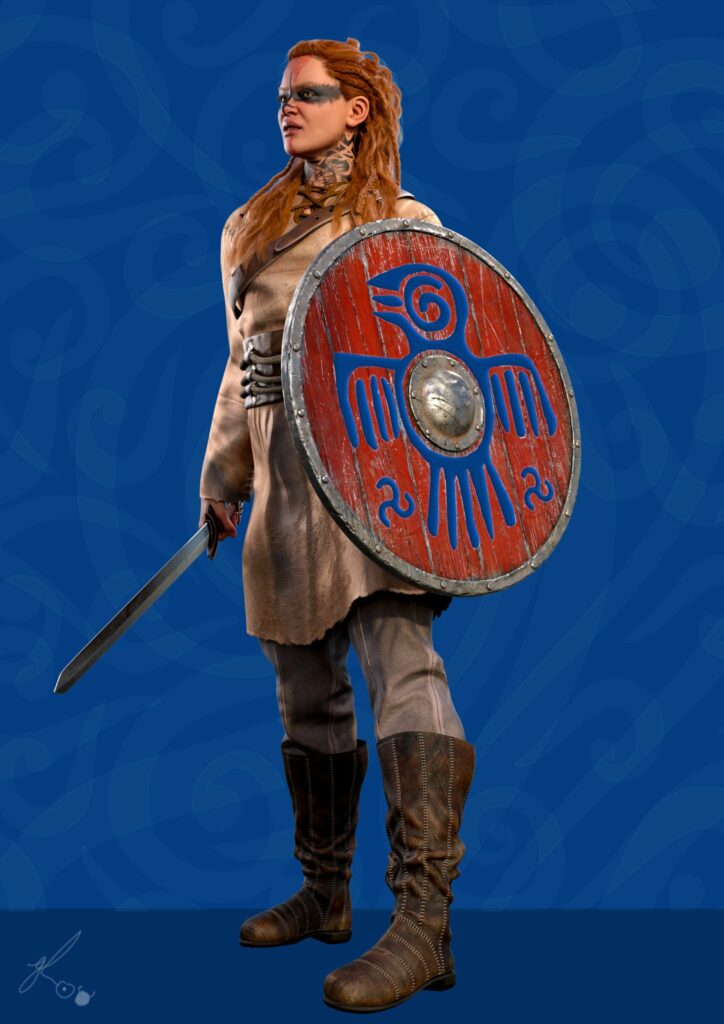
John Hugues replied with an illustration of his own… you can find much more of John’s digital art on his website!
Exploring RuneQuest with Merric
Merric Blackman (aka merricB on Twitter) is Exploring the RuneQuest RPG on his blog.
As always, I enjoy finding little bits that jump at me for some reason or other — because I never thought about it, or because I agree, or because I disagree.
For instance:
However, there’s one aspect to RuneQuest that I find out of place. And that’s the combat system. It’s quite detailed – the basic mechanics are more so than that of Dungeons & Dragons. […]
[…] And it is also very deadly. The advice I’ve been getting from friends who play the game is to generally stay out of combat. […]
Really detailed combat system. Don’t go into combat. Bit of a gap there.
There is also a summary of Merric’s experience running A Rough Landing, the first adventure of the RuneQuest Starter Set. Without going too much into spoilers, I found interesting that Merric raised some issues running the “investigation” part of the scenario, when wandering around the farms in the second part. One of my criticisms of A Rough Landing (and why I prefer The Broken Tower as a scenario for newcomers) is that it feels fairly straightforward, very much like a standard D&D adventure. But maybe that’s not the case for everyone — in fact, Matthew Constantine (see above) also raised the issue that A Rough Landing might be a bit tricky to run for some gamemasters… huh. Maybe I’ve run too much Call of Cthulhu and investigating things comes naturally to my players.
A few other notable comments:
It doesn’t take long for us to run up against stuff in combat that annoys us. Some of it is definitely a legacy of all our D&D play – but we don’t only play D&D. Some of it is just stuff that feels bad.
Stuff like strike ranks. […] This is, quite simply, a pain. […]
Huh huh. Y’all know how I feel about Strike Ranks as implemented in RQ2 and RQG. Anyway, it’s OK in the end:
As the session ends, I’m feeling optimistic about the game. While I can’t say the combat system thrills me, there’s a lot of things about it I do like, and the early part of the session with the role-playing and investigations went very well.
Read the whole thing here! I’m hoping to hear more from Merric.
Thank you for reading
That’s it for this week! Please contact us with any feedback, question, or news item we’ve missed!


